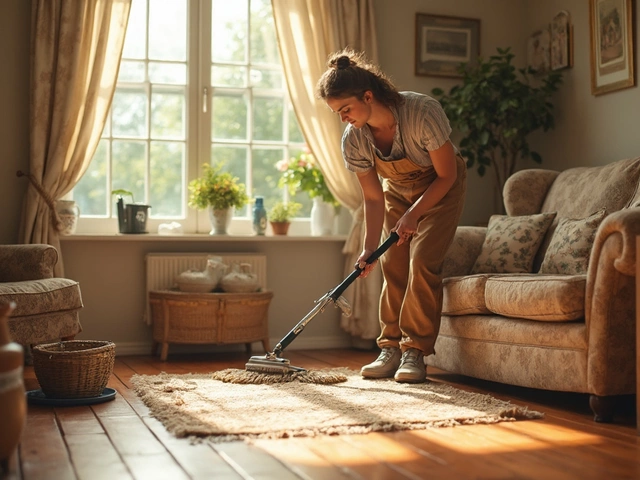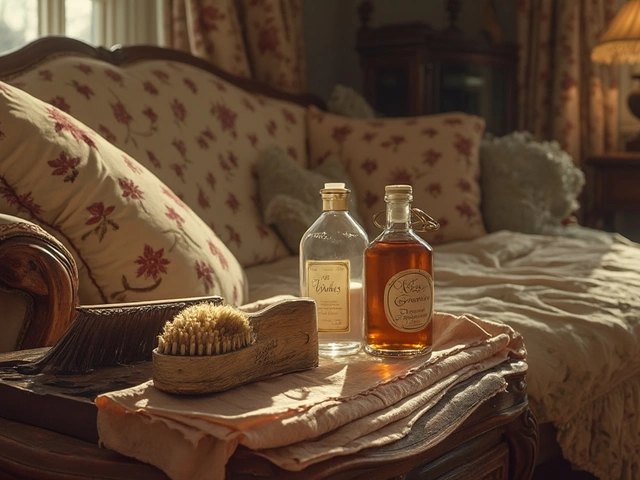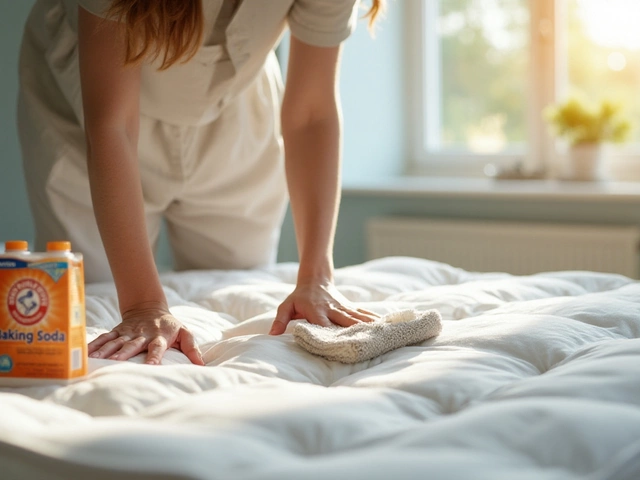Standing in the cleaning aisle, you’ve probably asked yourself—should you use vinegar or hydrogen peroxide to disinfect your home? If you’re ditching harsh chemicals but want to keep germs in check, it’s a real dilemma. Plenty of people swear by vinegar’s natural punch, while others reach for that fizzing brown bottle of hydrogen peroxide. Both are affordable and easy to find—but don’t work the same way.
Here’s the kicker: vinegar and hydrogen peroxide don’t kill germs equally. One tackles grease and mild bacteria, while the other hits harder but still isn’t perfect for every job. Knowing when to use each one can save you time, money, and maybe your sanity if you’ve ever wondered why that homemade spray didn’t clear up that funky smell. I’ll walk you through their strengths, when to avoid them, and some clever ways to get the most cleaning power—without trashing the planet or risking your health.
- The Real Power of Vinegar
- Hydrogen Peroxide: Not Just for Boo-Boos
- What Happens If You Mix Them?
- Where Should You Use Each One?
- Real-Life Tips for Safer, Greener Cleaning
The Real Power of Vinegar
Grab a bottle of vinegar from your pantry, and you’ve got one of the go-to hacks in eco-friendly cleaning. It’s popular because it cuts through grease, deodorizes, and leaves surfaces streak-free. But here’s the deal: vinegar's real strength isn’t full-on disinfecting. It works best against some common bacteria—like E. coli and Salmonella—but not all viruses or serious germs.
White distilled vinegar, especially, is the go-to. It usually has around 5% acetic acid, which is the part that actually does the work. According to the U.S. Department of Agriculture, “Vinegar can reduce bacteria in food and on surfaces by as much as 90% if applied correctly,” but it shouldn't be your only defense against tougher bugs.
“Vinegar is an excellent cleaner and mild disinfectant, but not a substitute for hospital-grade products where a strong germ kill is needed.” — Environmental Protection Agency on safer cleaning at home
Vinegar’s sweet spot? It shines on non-porous surfaces like glass, microwaves, refrigerators, and countertops that don’t come into contact with raw meat mess. It’ll break down mineral deposits and soap scum too—think showerheads and coffee pots. Just skip it on stone (like granite or marble) and be careful around rubber seals—acid can eat those over time.
For simple cleaning, mix equal parts vinegar and water in a spray bottle. If you want extra punch for things like greasy stovetops or cutting board deodorizing, spray undiluted vinegar, let it sit, then wipe clean. Never mix vinegar with bleach—the combo makes toxic fumes.
Bottom line: vinegar is a solid natural disinfectant for everyday non-critical cleaning. Easy on your indoor air, cheap as chips, and tough on smells—just know its limits, and you’ll get pro-level results.
Hydrogen Peroxide: Not Just for Boo-Boos
Most people think of hydrogen peroxide as the thing you dab on cuts, but it's way more than a first-aid staple. In eco-friendly cleaning, it really shines. Standard drugstore hydrogen peroxide is usually 3% strength—this is strong enough to tackle germs and still safe for home use. It releases oxygen when it touches surfaces, which helps break down bacteria, viruses, and even some stubborn mold. The fizzing you see? That’s it working.
Let’s get specific. According to the CDC, hydrogen peroxide at 3% can kill pretty nasty stuff—think salmonella, E. coli, even the flu. It’s been tested to destroy viruses on hard surfaces in under ten minutes. One thing you need to know: always store it in a dark bottle. Light breaks it down fast, so if you pour it into a clear spray bottle, it might lose its punch before you even use it.
| Germ/Bacteria | Can 3% Hydrogen Peroxide Kill? | Typical Kill Time |
|---|---|---|
| Salmonella | Yes | 2-6 min |
| Flu Virus | Yes | Under 10 min |
| Mold | Some types | 10-30 min |
| E. coli | Yes | 2-10 min |
Now, before you grab your bottle, remember this: hydrogen peroxide works best on hard, non-porous surfaces. It’s great for countertops, sinks, toilets, and doorknobs—basically, any spot where lots of fingers go. Avoid soaking fabrics or wood; it can bleach and damage them. Also, if you want that strong eco-friendly cleaning effect, let it sit on surfaces for several minutes before wiping.
- Never mix hydrogen peroxide with vinegar in the same bottle. It forms peracetic acid, which can irritate your lungs and skin.
- Keep it away from sunlight—always in that brown bottle, and store in a cool place.
- If you want to use it as a spray, just pour from the brown bottle into a spray nozzle (don’t transfer to a clear bottle).
For anyone nervous about chemicals, it leaves no toxic fumes or risky residues. It’s only water and oxygen once it does its job, which makes it perfect if you’ve got kids or pets running around. Talk about practical and safe.
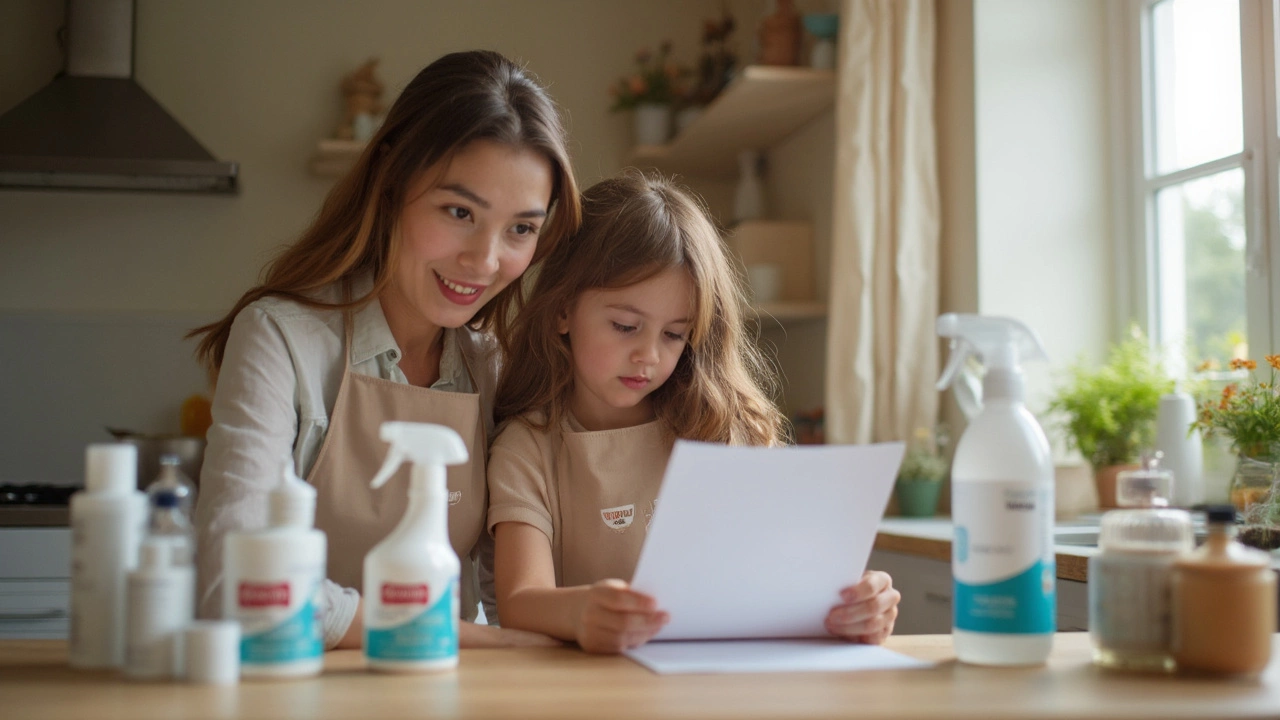
What Happens If You Mix Them?
This one’s a classic DIY cleaning question: can you get a “super-cleaner” by mixing vinegar and hydrogen peroxide? Quick answer—don’t do it. It sounds smart, but combining these two isn’t just pointless, it’s actually risky. When you pour hydrogen peroxide and vinegar together, you get peracetic acid. That might sound fancy, but it’s not something you want floating around your kitchen.
Peracetic acid is way stronger than either ingredient alone, but it can irritate your skin, eyes, and even the lining of your nose and throat. You don’t want to accidentally breathe those fumes or splash some on yourself—you could end up calling poison control instead of Instagramming your sparkling bathroom.
- Mixing in the same bottle amps up the risks. Don’t store them combined, even in an old spray bottle.
- If you want to double up, use one after the other (rinse in between). Never mix or spray at the same time!
- Fun fact: Some research shows that using hydrogen peroxide and then vinegar, in that specific order and with a wipe-down in between, can sanitize surfaces almost as well as bleach—but only when done safely.
Check out this quick chart breaking down what happens when you mix or alternate them:
| Method | Result | Safety Level |
|---|---|---|
| Mixing Together | Creates peracetic acid (harmful fumes, corrosive) | Unsafe |
| Hydrogen Peroxide THEN Vinegar (Rinse in Between) | Higher bacteria kill, more eco-friendly | Safe if not combined directly |
| Vinegar THEN Hydrogen Peroxide (Rinse in Between) | Also effective, especially against E. coli | Safe if fully dried between steps |
Keep your vinegar and peroxide in separate bottles and go one at a time. You get the DIY cleaning power, but skip the accidental chemistry experiment.
Where Should You Use Each One?
Knowing what each cleaner does best can save you a lot of hassle. If you try to use vinegar to disinfect a toilet after someone’s been sick—yeah, not the best move. On the flip side, hydrogen peroxide doesn’t do much on greasy stove tops. Here’s where things get clear.
Vinegar is mainly good at breaking down minerals, cutting through soap scum, and tackling mildew or light bacteria. It’s not strong enough to kill tough viruses or bacteria like staph or salmonella. So don’t rely on it in kitchens after prepping raw chicken. Great spots for vinegar include:
- Bathroom tiles and shower heads (excellent for dissolving hard water stains)
- Mirrors and glass (streak-free shine is real)
- Descaling kettles, coffee makers, or dishwashers
- Everyday wipe-downs of counters or doorknobs (if you’re just freshening things up)
Hydrogen peroxide is a different beast. It’s a legit disinfectant and kills bacteria, viruses, and even mold spores better than vinegar. The CDC lists hydrogen peroxide as effective for sanitizing surfaces if used at the standard 3% strength straight from the bottle. But here’s the rub—it breaks down in sunlight, so always store it in a dark bottle. You should use hydrogen peroxide on:
- Cutting boards (especially after meat)
- Toothbrushes, hair brushes, and combs
- Bathroom sinks and toilets after someone’s been sick
- Moldy spots on non-porous surfaces
- Kids’ toys (rinse afterward with water, just to be safe)
| Surface or Use | Vinegar Recommended? | Hydrogen Peroxide Recommended? |
|---|---|---|
| Shower tile | Yes | No |
| Raw meat cleanup (countertops, boards) | No | Yes |
| Pet accidents (hard surfaces) | Yes (smell remover) | Yes (disinfect) |
| Windows and mirrors | Yes | No |
| Moldy bathroom corners | No | Yes |
One thing to remember: never mix these two in the same bottle. Mixing vinegar and hydrogen peroxide together creates peracetic acid, which sounds science-y but can irritate your lungs and eyes. If you want to double up, spray one first, let it sit, then wipe and follow with the other.
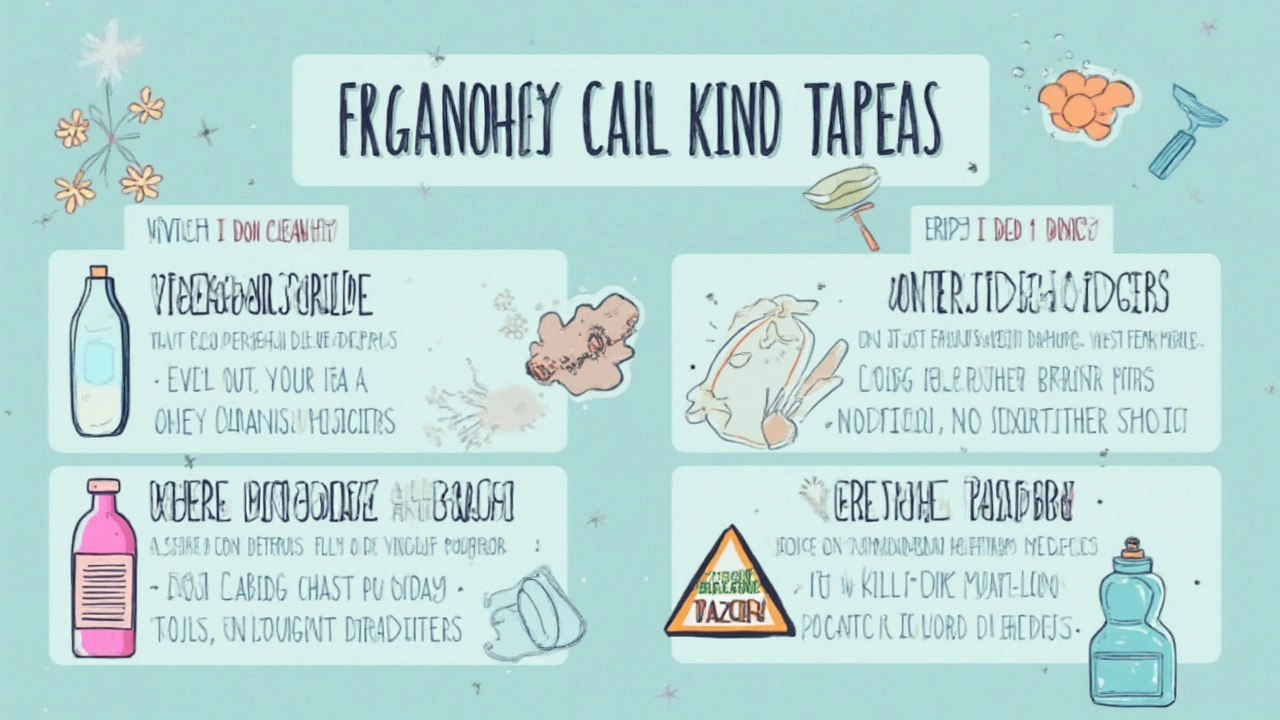
Real-Life Tips for Safer, Greener Cleaning
If you want your home clean without the chemical cloud, you’ve got to know how to actually use these eco standbys. First off, don’t swap everything for vinegar or hydrogen peroxide overnight—start small so you see where they add value. Here’s where things get practical:
- Hydrogen peroxide comes in a 3% solution. That’s safe for kitchen counters, door handles, and even kids’ toys, but don’t let it touch granite or marble. It can dull shiny stone and hurt the sealant.
- Vinegar does a solid job at fighting mineral build-up and greasy gunk on glass, chrome, or inside your coffee maker. It’s also fine for mopping tile floors, but skip it on natural stone—acids and marble never mix well.
- Spray hydrogen peroxide directly on a surface, let it sit for five minutes, then wipe. That "dwell time" makes the difference between wiping away germs and just moving them around.
- With vinegar, wait at least a couple of minutes before wiping for the best cleaning effect, especially if the area’s grimy.
- Never, and I mean never, mix the two in one bottle. They react together to make peracetic acid—a lung and eye irritant. Use one, wipe, then the other if you’re determined, but always rinse in between.
If you want the hard numbers, check out how the two stack up as natural disinfectants in this quick table:
| Cleaner | Kills Bacteria* | Kills Viruses* | Safe on Food Surfaces | Safe on Stone |
|---|---|---|---|---|
| Hydrogen Peroxide (3%) | Yes (99.9%) | Some** | Yes (rinse after) | No |
| White Vinegar (5%) | Some (80%) | No | Yes | No |
*Rough estimates based on CDC and EPA research. Vinegar isn’t registered as a disinfectant for viruses like flu or coronavirus. Hydrogen peroxide gets closer, but only at contact times longer than most people use.
Other tips? Store hydrogen peroxide in its original brown bottle so light doesn’t break it down—it loses its cleaning punch faster than you’d think. And if you care about what’s in the air, crack a window when you’re hitting the bathroom or kitchen with either cleaner. Good ventilation always helps, eco-friendly or not.
Want to save money with DIY? Refill a spray bottle with hydrogen peroxide and label it clearly (no kids’ drawings, please). Stick with regular white vinegar, not apple cider vinegar, for basic cleaning—the fancier kind leaves sticky stains.
Finally, only use what you need. Too much cleaner is just a waste, and honestly, the planet doesn’t need more of anything poured down the drain.


